|
The Burris Eliminator is not the prettiest scope in the world, and the Grim Reaper graphics are a little bit silly for a scope that costs almost $1,000, but as a product that stands on it own, the Eliminator is worth every penny. It is a scope, rangefinder, and ballistics calculator all in one.
This base model is 4-12 power, and you have to leave the scope on 12x to use the rangefinder dot for holdover.
You use the four pads on the control to set your zero distance and drop number for the cartridge you are using. The drop number is comprised of your zero distance and the inches of drop at 500 yards for your cartridge. Burris supplies a list of drop numbers, and it is on many modern boxes of premium ammo as well. This Hornady Custom ammo drops 52 inches at 500 yards with a 100 yard zero, which equals a drop number of 152.
The scope is zeroed with standard capped turrets. Then the dot gives you the holdover, instead of having to click a turret or calculating Mil-Dots.
The drop number for Hornady Superformance is 10″ different than both the Hornady Custom and green box Remington from Wal-Mart. Our test was to see if the Eliminator could perform in a hunting situation with one shot from a cold gun.
Our targets, from 54 to 251 yards, which are normal range that a game animal might pop up in most regions.
Our resident U.S. Army Sniper Ben Becker did the shooting, and all but the last shot were well-rested. The tall grass required a higher perch for 251 yards, and it wasn’t as stable. Ben felt the shot was sound regardless.
|
Burris Optics Eliminator Laserscope
https://www.burrisoptics.com/laserscope
Blowing the shot can be caused by a lot of things. You may not have zeroed your rifle properly. You may not have been able to get a steady rest in time, or more often than not, you may have figured out the wrong holdover. Even the best shooter, given the pressure of a shot that needs to be shot right now, can blow a big shot, without even having to do quick math and calculate a holdover. Anyone can blow a shot, all factors considered, so any advantage you can pick up from your gear, the better.
We have covered several “rangefinding” scopes in the past. Some require math and some don’t, but by far the most advanced range estimating scope out there is the Burris Eliminator Laserscope. It has a built in rangefinder, and after you set it up for the ballistics of your rifle and cartridge, it gives you a .33 MOA dot for exact holdover. Sounds too good to be true right? At a pricetag of $949 MSRP, this is not an inexpensive toy mind you, but it does work. We got a chance to put the Burris Eliminator through its paces, and it works pretty well. For both hunters and snipers, the Burris Eliminator appears to be a great product that does what it says it will do. We tested the base model, called simply “the Eliminator,” and we hope to eventually get a look at the $1,499 Eliminator III, which added even more features to this revolutionary product. We also found a $100 rebate coupon for scopes purchased until the end of this year, and this is for the base model that we have reviewed here.
By combining a scope, a rangefinder and a ballistics calculator, the Burris Eliminator has removed all of the calculations from making a shot at distance. Our tests on this scope are not the ideal. The Eliminator directions do clearly state that you should check the settings with real world results before you take the scope into the field. This is important, because for our tests, we didn’t. Our thinking is, in many parts of the country, including most of the entire East coast, you don’t have easily available 500 yard ranges on which to test. To verify the Burris “drop number” in the directions, you would have to not only be able to shoot at 500 yards, but also shoot well at 500 yards, to truly test the full arc of your bullet trajectory.
The way the Burris Eliminator works is you first set up the scope to match your ammo, then you use the rangefinder in the scope to give you a point of aim that matches the trajectory. A red dot floats up and down the vertical axis in the crosshair, and you use that to pinpoint your shot. The rifle is zeroed as normal to the center of the crosshair – either at 100 or 200 yards – and the scope gives you the dot on the vertical of the crosshair to adjust for holdover to the distance to your target. There is a button to the side of the scope that you press to get the range, just like a regular rangefinder, and it also comes with a remote button that you can mount on the rifle, on the scope, or even on your finger. Press the button, the scope gives you the distance and it positions the red dot. In theory it should work every time, but in the real world ballistics are not an exact science, and many factors come into play to effect the actual trajectory of your ammo when matched with your rifle.
The scope has to be on 12 power for the dot to be correct, but other than that it is not an easy gadget to screw up. If you look at the pictures here, you will see that Burris gives you a booklet of pretty much every commercial cartridge from every ammunition manufacturer. They also have it online as link from the scope information page. On that list, you look up the “drop number” for your cartridge. This number consists of your zero point, 100 or 200 yards, and the projected drop in inches of the trajectory of the ammunition. So if your ammo says it has a 42 inch drop with a 100 yard zero, your drop number is 142. You may find this number on your ammo box, or you can look it up on the list if the box doesn’t have it.
These drop numbers are calculated for the individual factory loads using a 24 inch barrel. To come up with their data, they also would need to use some atmospheric conditions and a rate of twist, neither of which are ever specified on the box or on the list, but could loosely translated as “average” I guess? Therefore, your actual drop could be different than the number given for the drop number, which is why they want you to verify the drop number before you go into the field. Even lot to lot, the same ammo with the same bullet from the same manufacturer may exhibit different points of impact at 500 yards, so the data is extremely relative. Theoretically this would be the Achilles Heel of the Burris Eliminator, that you need to verify your drop number, but in practice we found it to be not as much of an issue at practical shooting distances as you would think. When we get the flagship Eliminator III, we will most likely do the 500 yard testing. For this base model Eliminator, which will apparently remain available, we thought it better to keep things simple. Most people don’t have the ability to verify the 500 yard drop of their ammo.
You could, we should note here, use a chronograph to calculate your 500 yard drop, but this is outside the scope of our testing as well, because most people don’t have a chronograph, and few would invest in such a device just to zero their scope. Using the Ballistic Coefficient of the bullet, with the weight and velocity, any ballistics software would give you a theoretical point of impact at 500 yards. But again, this is theoretical, based on the manufacturer supplied wind resistance (BC) of the bullet. Most people will buy this scope, zero it at 100 yards (the scope does have a method for 50 yards as well as 200 yards), and go hunting, hoping that the scope will give them a kill shot at distance. This is the focus of our test, using paper targets instead of live game animals.
Our test rifle is one of our guns that have been outfitted with a Teludyne Tech StraightJacket. It is a Savage Axis that Teludyne modified for us over two years ago for our first StraightJacket article. This gun has repeatedly shot into under 1/2 MOA at up to 500 yards, rested on a Caldwell Lead Sled, and fired by our resident U.S. Army Sniper Ben Becker, who also did the shooting for this article. In theory at least, the Savage with its StraightJacket, should take as many variables out of the equation as possible. Human error notwithstanding, we should be able to rely on just the scope.
Our methodology was simple, but closely mirrored what could happen to you in the real world. We first zeroed the scope with Hornady Superformance 150 grain GMX. It drops 42 inches at 500 yards, giving us a 142 drop number. Then we re-zeroed the scope with Remington Core-Lokt 150 grain, which has a drop number of 152. This is a significant difference, ten inches, in the point of impact at 500 yards. If you think about it, you could be faced with exactly this issue on a hunting trip. You could, in advance, zero your rifle with premium Hornady Superformance (and even test your drop number), then forget your ammo box, or have it fall out of the boat, and be forced to buy Wal-Mart green box Remington. Re-zeroing the rifle in such a case would be a luxury, but if you did, can you rely on the Burris Eliminator to give you a point of aim on shots of varying range?
As you can see from our results, the answer is yes, with our specific test and a rifle that had a 24 inch barrel. We limited it to 250 yards due to practical concerns. Blind, nobody in their right mind would take a shot at a living animal without proving out a drop number at more than a couple hundred yards . Nobody wants a wounded animal out there. There are other issues at further distances as well. If you have any experience with a rangefinder, you know that unless you have a very steady rest, it is difficult to get a range on a whitetail sized target at more than a couple hundred yards. Even a slight movement will give you a false reading. The same is true for the Burris Eliminator. We found it very difficult to get a range out beyond our test distance of 251 yards. You can do it, but by then you may have missed the shot. Remember you have to hold the rifle still, push the button, then hold the rifle still again to shoot.
Our test was somewhat informal, but from what we could see, in a pinch you could in fact rely on the Burris Eliminator to give you a fairly reliable point of impact downrange. All of the shots from inside 100 yards to 157 yards were solid kill shots. The 251 yard shot was a little low, but still a kill shot on the average whitetail. Was our test conclusive? Probably not. But with a cold rifle on each shot, one shot each, just like a game shot, each one most likely produced a dead animal. The Burris Eliminator could be put through many more paces than this, and if we get our hands on an Eliminator III we will conduct a much more in depth review and comparison. With hunting season right around the corner, we thought it best to get a basic review on this killer piece of gear before the action begins.
The Eliminator III is a huge step up from the Eliminator we tested here, but it also significantly more expensive. It goes to 16 power instead of 12, and you don’t have to set the scope at maximum magnification for the red dot to be correct. There is also a windage system, and the reticle is more in line with Mil-Dot, in case your battery dies or you have to manually hold a shot over. Most importantly, it isn’t as futuristic looking as the basic Eliminator. The Eliminator III looks more like a regular scope, and looks do matter on a major scope purchase like this.
The clarity of the scope itself and the light gathering brightness are not that of other scopes in the $1,000 price point, but with such small objective lenses on the Eliminator that would be impossible anyway. As a standard scope, the Eliminator doesn’t really compare. But as a rangefinder and scope combo, with ballistic data built in, the Eliminator is both unique and functional, with good brightness and clarity. With all the money we spend these days on getting to the game and getting the shot, the Eliminator series may be the missing link that can make your hunt successful. You don’t have to buy mounts with the Eliminator. It comes with an integral Picatinny rail mounting system, and we were able to easily mount it to standard bases on the Savage.
Even though it has been out for a while, the Eliminator is still in the “early adopter” phase, but you will not be disappointed. It may not be the prettiest scope in the world, but next to a trophy rack it will get much prettier. Our test was the standard Burris Eliminator, which, as of now is the base model of the Eliminator line. For the first try at a base model it is an impressive piece of gear from Burris and we highly recommend it.

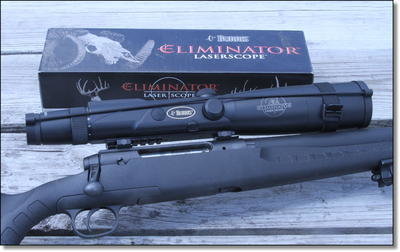
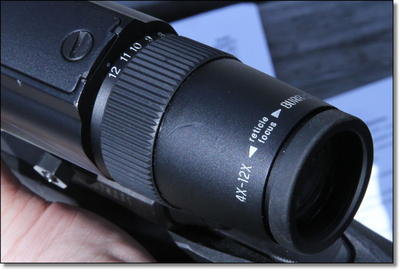
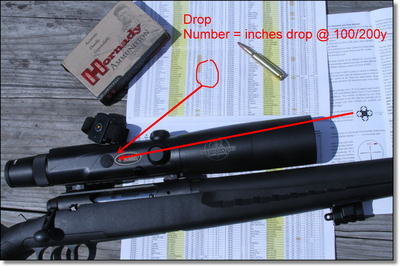
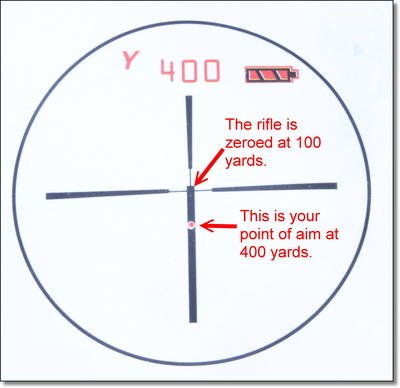
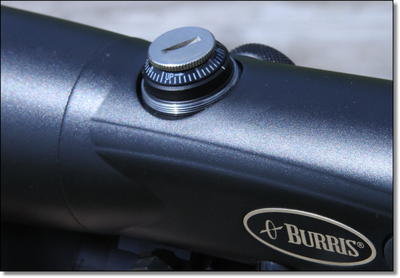
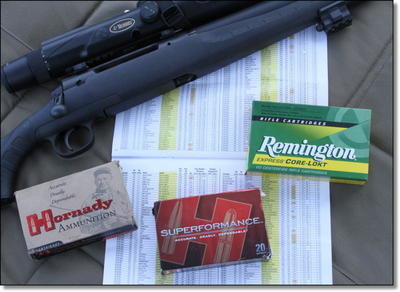
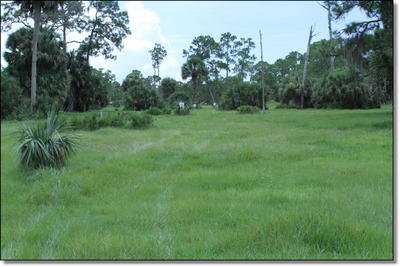
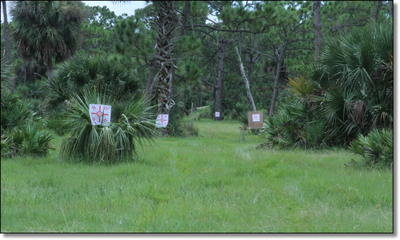
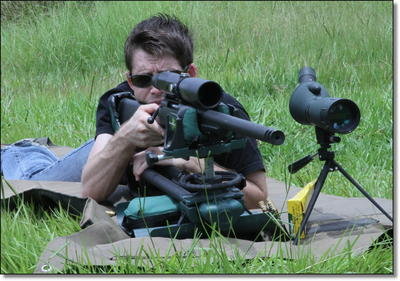




i have several of the eliminator111 scopes and none of them will range a black bear after being fired a few times . burris says black is not very reflective can not be fixed but all my handheld rangefinders will range a bear
The rangefinder works very well….we tested it on a measured range out to 600 yds it was within 5 yds every time. The same elements that affect other range finders affect this one as well. Also nobody has mentioned that you can adjust this in 1″ increments to customize it to your rifle and loads. It doesn’t matter how accurate you can shoot, if you “guess” the range incorrect your shot will be too high or too low resulting in a wounded animal or a missed shot. As far as holding on target to get the range ?? If you can’t hold it on the target to get the range, you can’t hold it on the target to kill it either…..this scope has a remote button that comes with it so you can place it on your foregrip position or wherever it makes it easier for you. The optics are good (no not leupy,zeiss,NF,ect) but good. It doesn’t look pretty on a bolt or lever action wooden stock ect, but on an AR frame or simular like my Rock River LAR308 Predator it looks pretty aggressive. So….. bottomline is the scope does what they say it will.
I bought the II model and am in a quandry as to which gun I can mate it too. I have a T/C Venture Predator in 308 and with the scope it came with was right on out of the box 3 shots and they cloverleafed the bulls eye. Then I have a Ruger 77 in 25-06 which I love to shoot. Then my last choice a Browning 300 WSM that at present has a Leupold on it. Can you see my quandry. Any opinion would help.
Never read these reviews before so don’t know if the standard here is get the review out, or the intent is to provide some real insight to the capability of the unit in question.
I Learned nothing about the ranging capabilities of the Eliminator, no objective optical tests, no ranging/shooting past 251yrds because people in the east can’t get to a’ longer range supposedly. I would guess there are some hunters outside the food plots who may need to make a range and shot past 250. You seldom need a rangefinder inside that range. The PRIMARY purpose of a rangefinding scope is what? Correct——rangefinding. So what are the capabilities of this unit? We’ll never know. Hopefully when the EliminatorIII gets a review some of it’s capabilities may be explored, such as ranging, actual impact verses hold at multiple ranges, some review of the windage calc’s! Maybe put Ben in charge of more than pulling the trigger.
I use the Burris Eliminator,I also bougth the frist Burris rangfinder and Steve at Burris let me swap my old one for the new Burris with the RED DOT ballistics calculator for $200. To put it in one or two words It is a winner it takes the gess work out of shooting I have taken shoots from 50-650 yards with a Browning A-Boil 300 MAG with BOSS a good match up. I hunt in TEXAS most of the time so you have all type of land froms to contin with .
THANS FOR THE READ
Ray C. DEERPARK,TX
las poleas del arma estan mal acomodadas la concha de tu madre no sabi armar un puto rifle de francotirador 9ml culiao porrro hijo de la remil puta que te remil pareo :)…
Have one on a dpms 308 lr with a ND 5 lazor. Hogs at midnight at 400 yards!!! Oh yeaho. No problem
I love both of mine. I also have a chronograph and so my reloads are very consistent. I have them both on JP enterprises …one .223 and one on a .308 …they work great and are a lot of fun with no thought required . Ballistic drop calculator is great when you know what you are shooting and drop numbers are correct. It is designed for a person that has calculated the flight of his projectile and knows his weapon. It is deadly accurate, alas I wish it did work on all magnification levels but you get use to it. It is reliable and worth it…Rick
Range finder built in, ok, but the ballistic calculator is a wast. A good shot is far more than drop.
99% should not be shooting even to 300 yards! With that said, I only shot paper.
Out here in Montana you better be prepared to make a 300 yard shot. We shoot 600 yards ethicaly. If you can’t shoot 300 yards better stick to bow hunting!!!